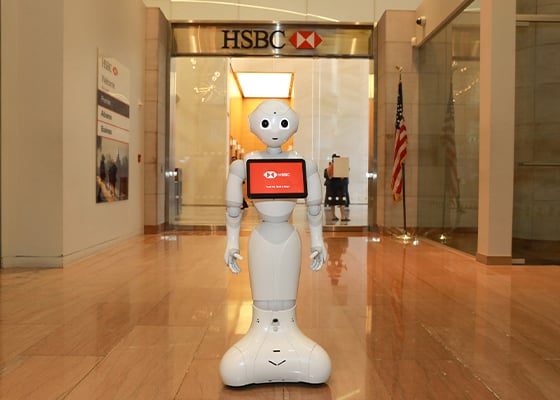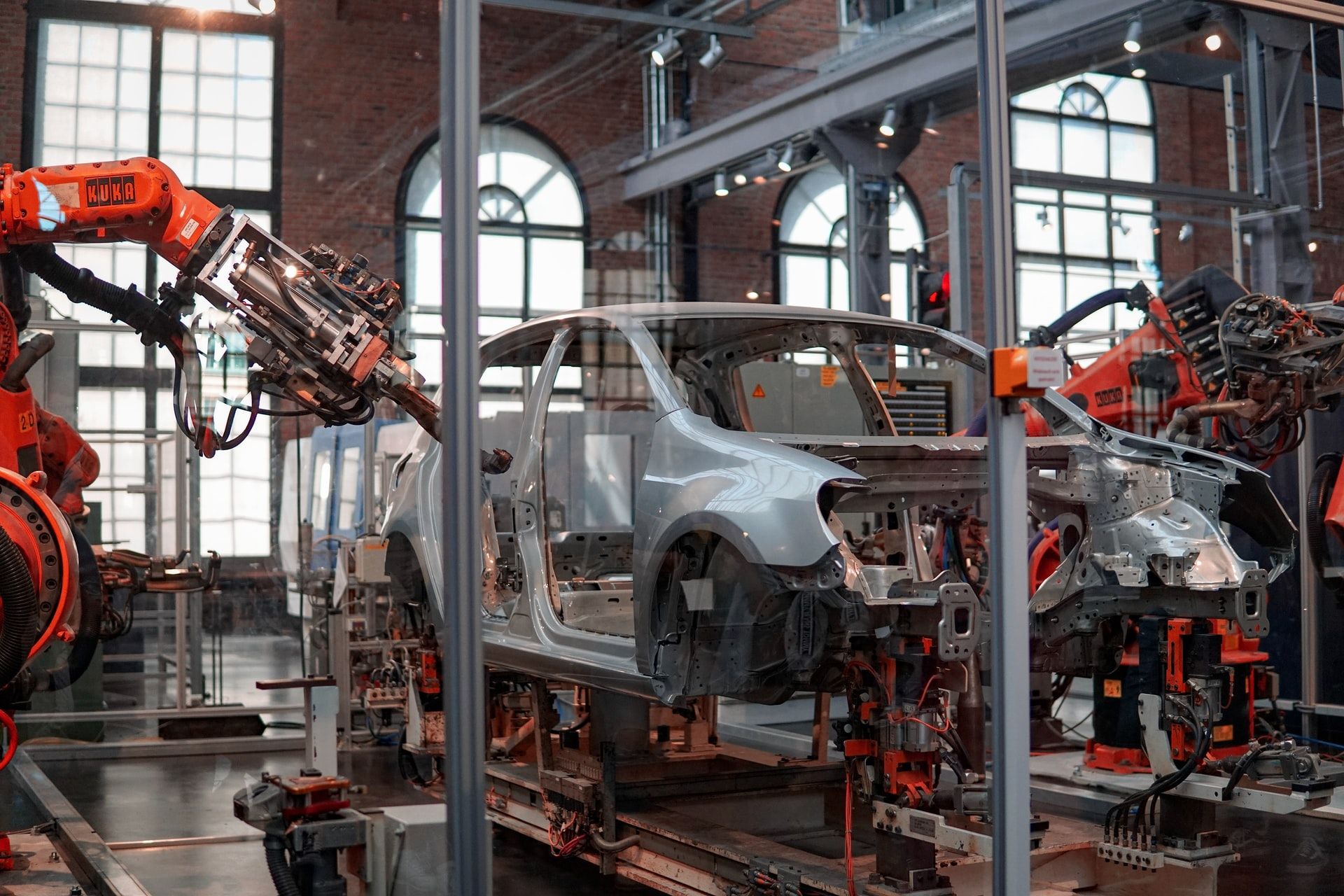The Potential for Robotics in the Banking Industry
Jun 17, 2021
By Evelyn Long,
 Image source: GeekWire
Image source: GeekWire
Robotics has increasingly become more prevalent in most modern systems and industries. Thanks to technological advancements, robots can do much of what humans have done with more efficiency. They have permeated nearly every sector and the lives of many, with inventions in modern homes such as robotic vacuum cleaners and virtual assistants.
Robotic automation has been able to expedite peoples’ needs. Production lines that used to take days to make a vehicle can now put together a car in hours. Of course, human supervision is still a necessity, but robots are practical and work well.
The potential for robotics in the banking industry is on the rise as processes become more complex. Robotic process automation (RPA) allows banks to use software to cut costs and streamline operations.
What Is Robotic Process Automation in Banking?
Robotic process automation uses software to install robots into desktops, user devices, or artificial intelligence. It automates banking work that is generally repetitive, meaning employees can focus on other matters.
Banking robots will take over a device’s keyboard and mouse actions. They can open desktop applications, copy and paste information, send emails, click and do other low-value tasks. They can even pass on information from one bank to another, facilitating operations.
Some banks still rely on human operations, though. Automated systems may seem daunting at first, but they can be incorporated smoothly. They streamline information between institutions without the confusion manual work can often bring.
Benefits of Using Robotics in Banking
There are multiple benefits of using robotics in banking. Already mentioned was the streamlining of repetitive tasks, allowing bankers and others working at the institution to focus on more meaningful work. Here are some of the other benefits of RPA:
- No coding experience is required: Employees at a bank need no coding knowledge to implement RPA into their business, making the transition easier.
- Robots work consistently: Robots don’t need breaks as humans do. They can work 24/7, making them highly efficient.
- It’s relatively cost-effective: RPA simply adds to banking infrastructure. There is no need to upheave the current infrastructure or even upgrade it. RPA works with most systems.
- Robots can be exchanged: If a robotic application fails for some reason, it can be exchanged, reinstalled or updated within a short period.
- They increase human morale: Sometimes, when employees are hired for a banking job, they start by doing repetitive tasks, like entering data. However, RPAs boost human confidence because they take over those tasks so people can do meaningful work.
- Employees can manage robots: After installing an RPA, employees at a bank can train to manage their robotics system and won’t have to rely on intervention from information technology
It would be hard for banks not to implement robotics in their business. As technology advances and more banking systems adopt RPAs, they will become a new normal in the industry.
Current Use of Banking Robotics
Banks are already using this efficient and reliable technology. Here are some ways RPAs are helping banks be more accurate, reduce costs and minimize human error:
Processing Loans
Loans require a lot of information. Typically, an employee at a bank would have to sift through multiple documents to look for what they need. RPAs can gather that information and even make decisions based on the input. Plus, they can prepare the necessary material for a banker to decide on a loan.
Managing Cards
People lose their cards often, and sometimes, they are stolen. Robotics can support these inquiries, block the card, or charge reversals based on the customer’s request.
Transferring Funds
Many people have downloaded banking apps on their phones. One of the features of mobile banking is same-day fund transferring. In the past, this could take up to 10 minutes. With RPAs, the request processes nearly instantaneously.
Staying On Top of Fraud
As with most technology, there’s room for improvement with robotic process automation in banking. There have been cases where the RPAs fail or cause fraud. For example, pump-and-dump schemes have been a result of misused robotics systems.
However, reputable financial institutions will use RPAs for good — tracking these poor use cases and using robotics to combat malicious agents looking to steal data and commit fraud. Leveraging this type of technology greatly benefits the industry, and it is bound to continue to improve and make new ways to facilitate banking.
Verifying Customer Identification
Banks have used robotics in call centers to make customer identification a bit smoother. RPAs are equipped to gather client information to ensure everything meets their requests. It improves customer service and facilitates call center operations.
Robots Realize Their Potential in Banking
Robotics can be used to systematize complicated financial processes and work in tandem with human brainpower. Although robots have been able to do repetitive work in banking, it is highly unlikely that they’ll completely replace manual labor. People need these types of jobs to make a living, and there are some tasks too complicated for robots to understand.
Robotics is making the banking process a bit easier and smoother. By managing information, systematizing requests, and assisting with customer service, they can be used to create a better banking experience for employees and customers alike.
Discover more about Banking and Robots with RobotLAB!

Author
Evelyn Long is the editor-in-chief of Renovated and a writer with experience covering green technology and construction for publishers like NCCER and BUILD.










 Too much to read? Don't have time?
Too much to read? Don't have time? 

.webp?width=124&height=124&name=image%20(1).webp)
.webp?width=169&height=87&name=image%20(2).webp)













